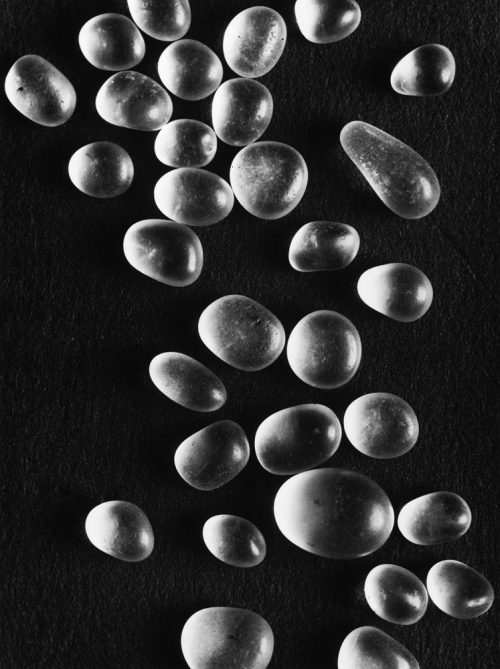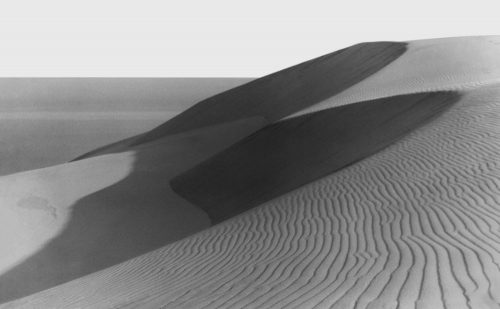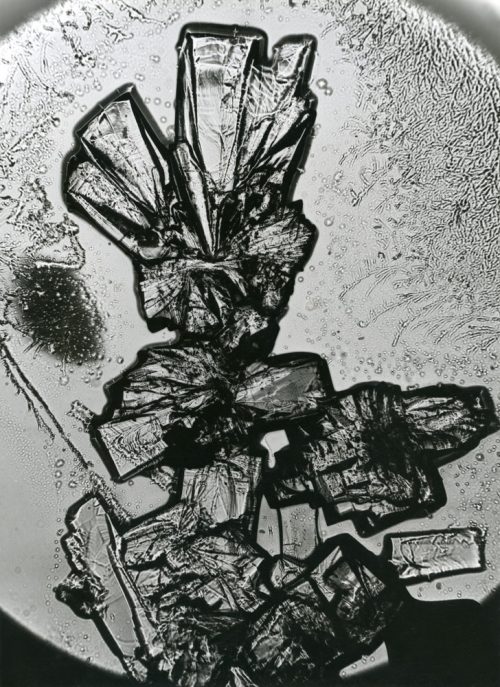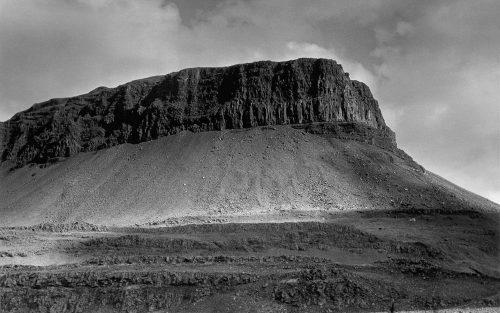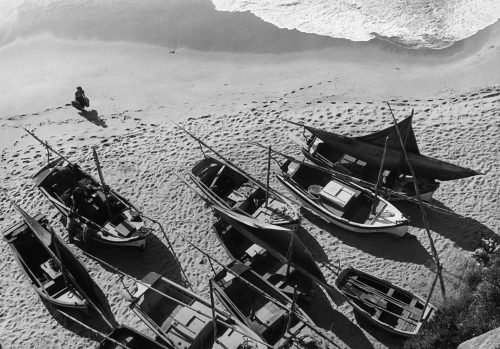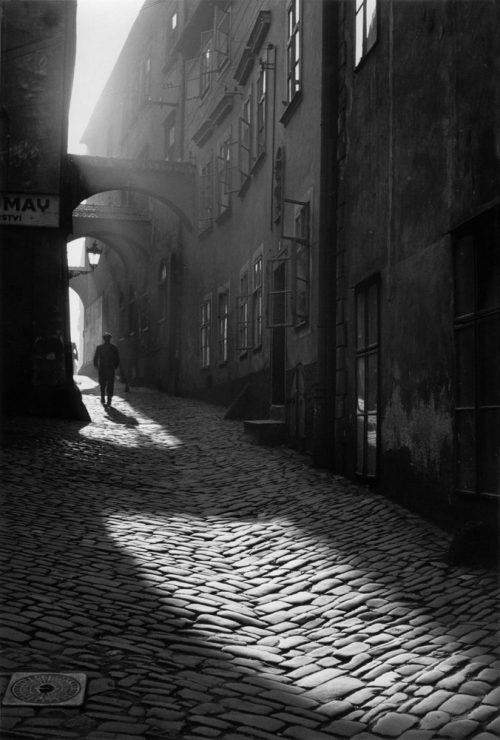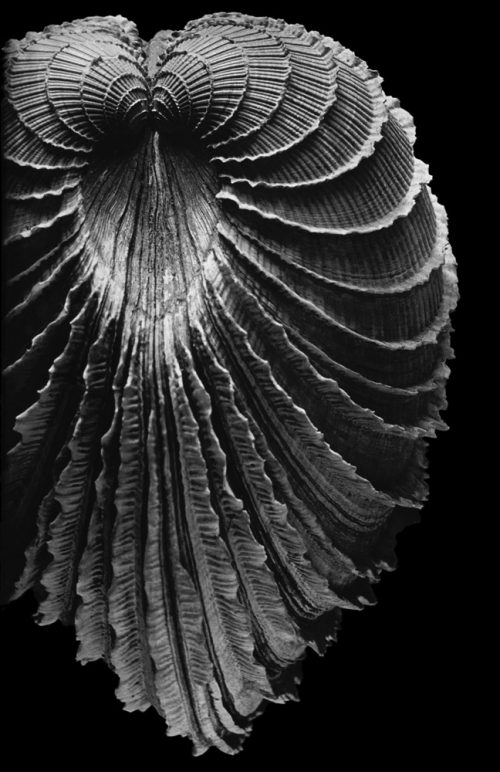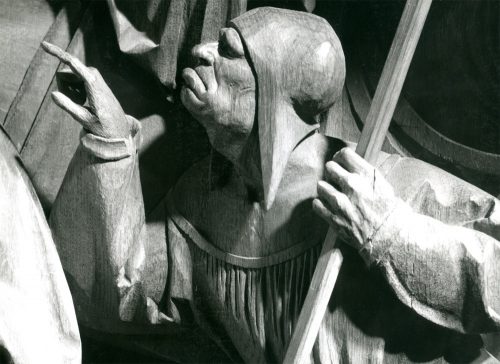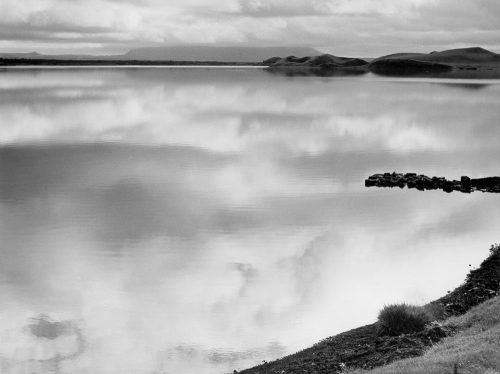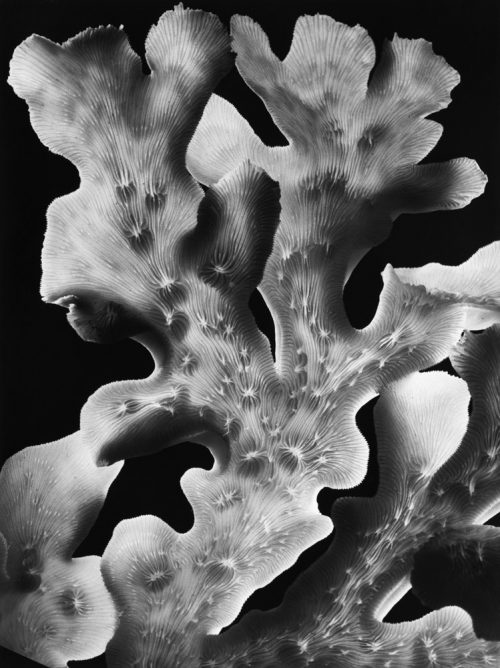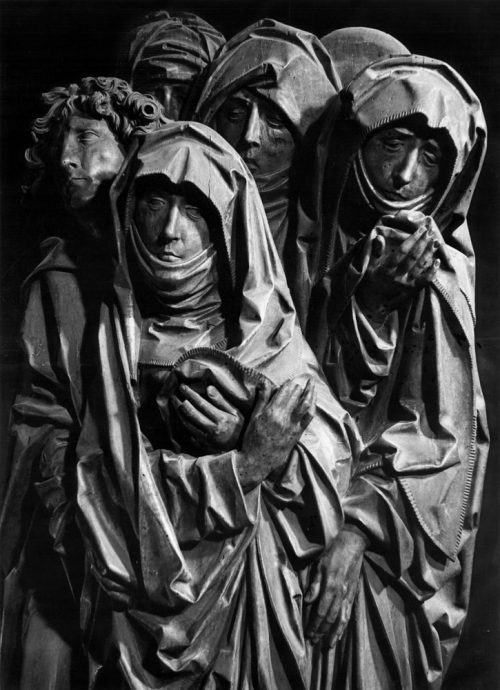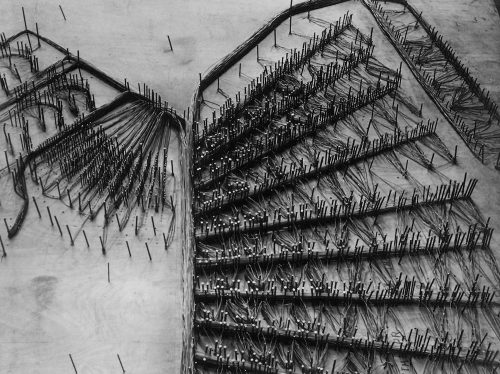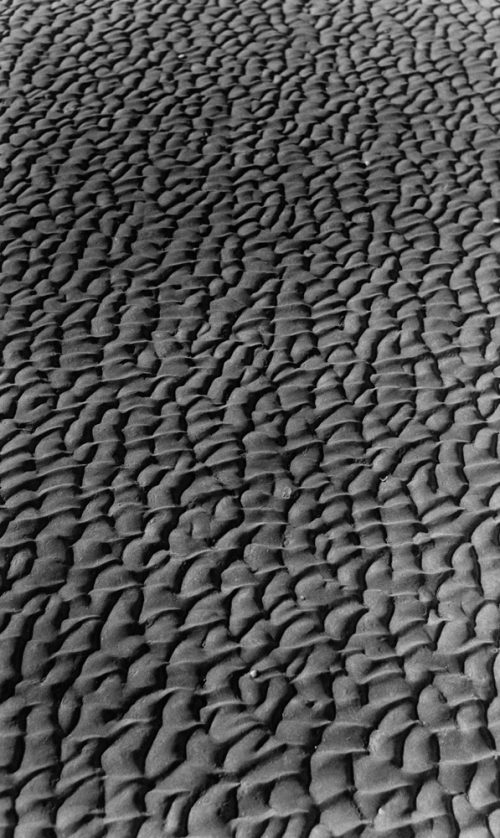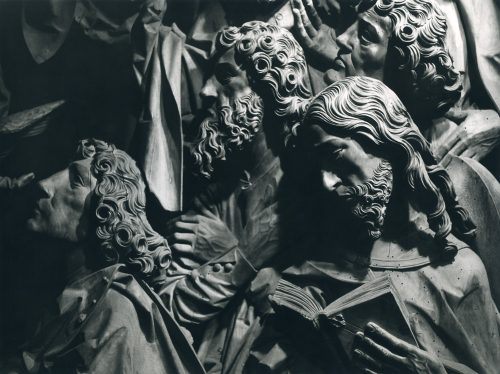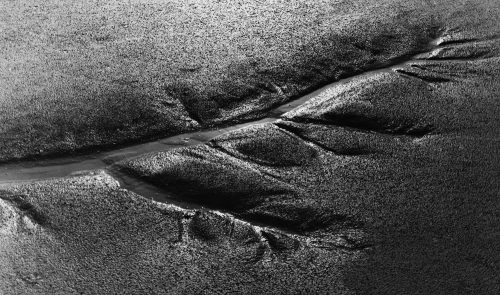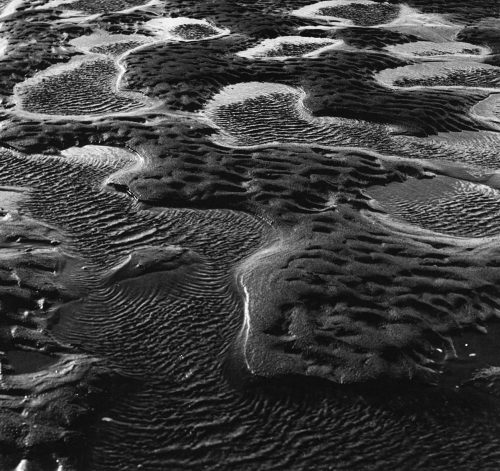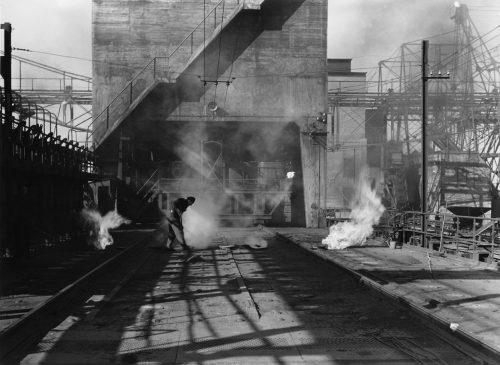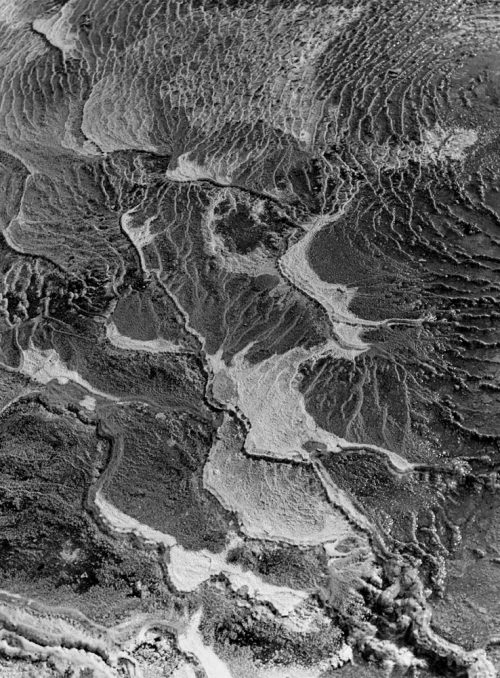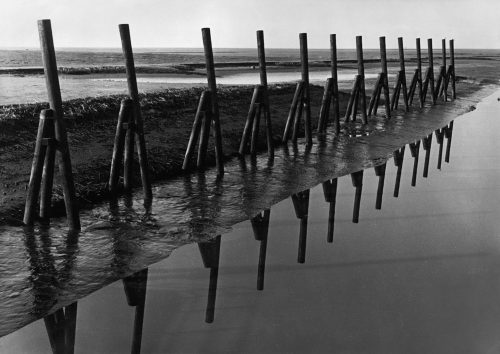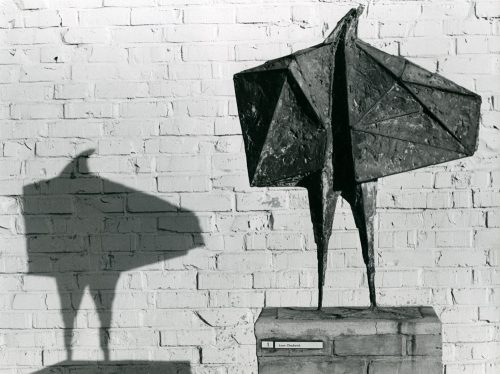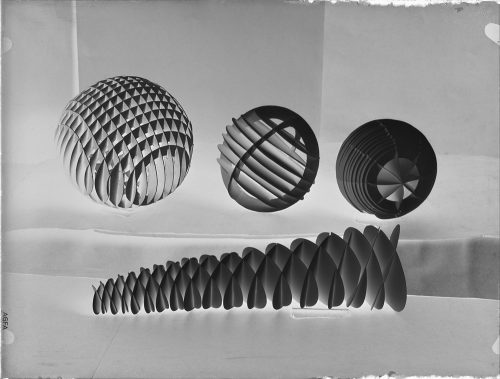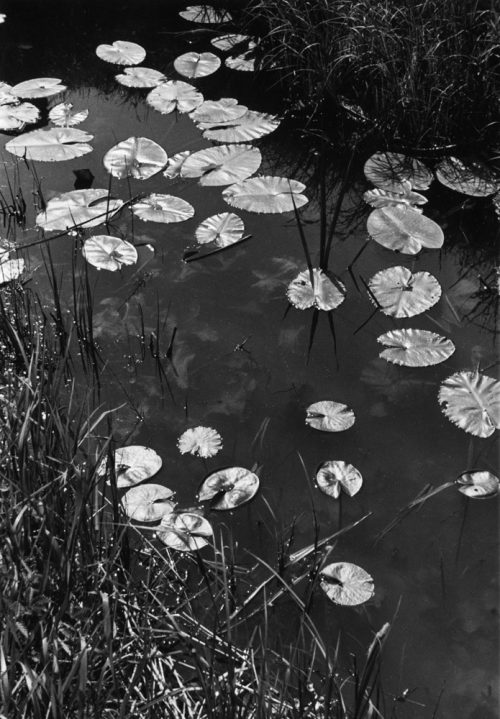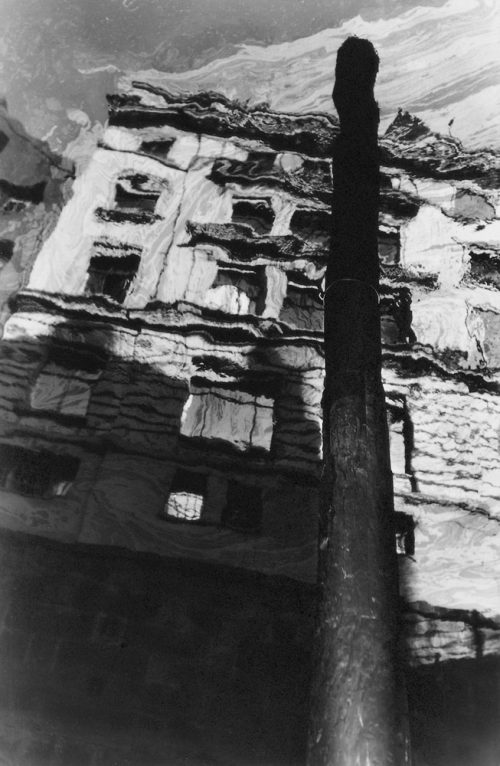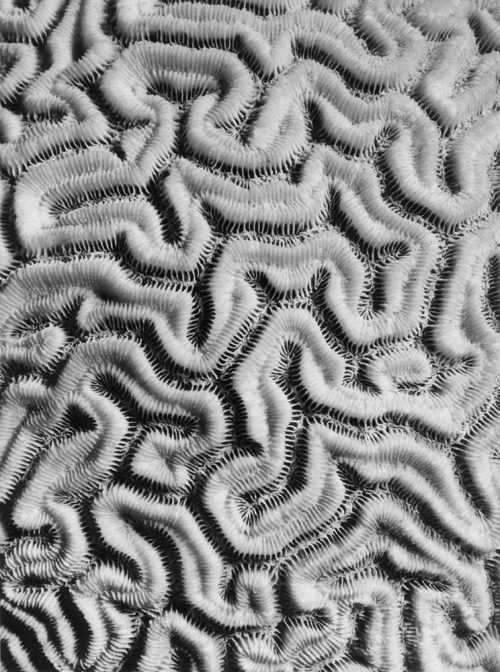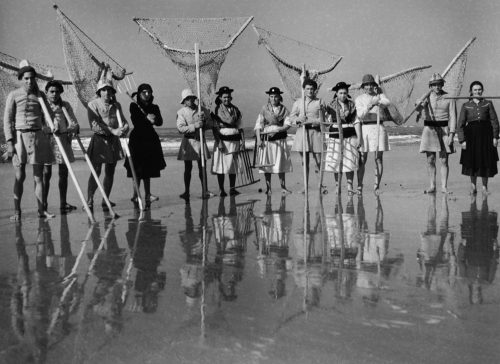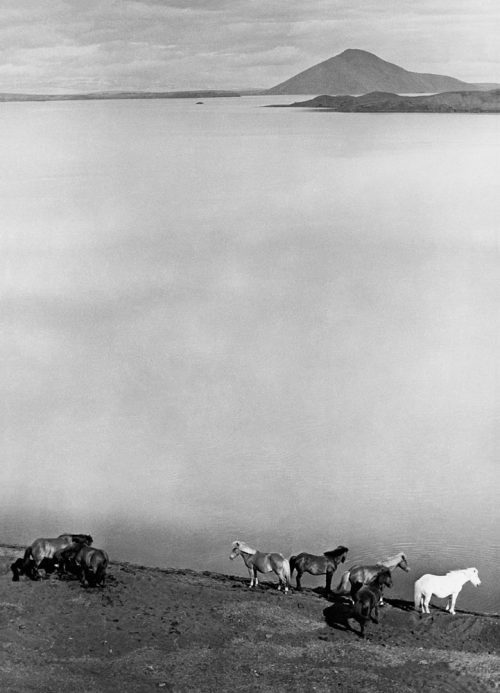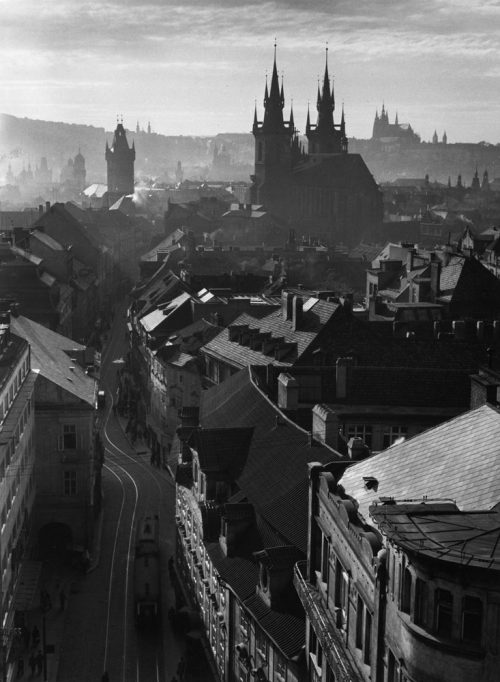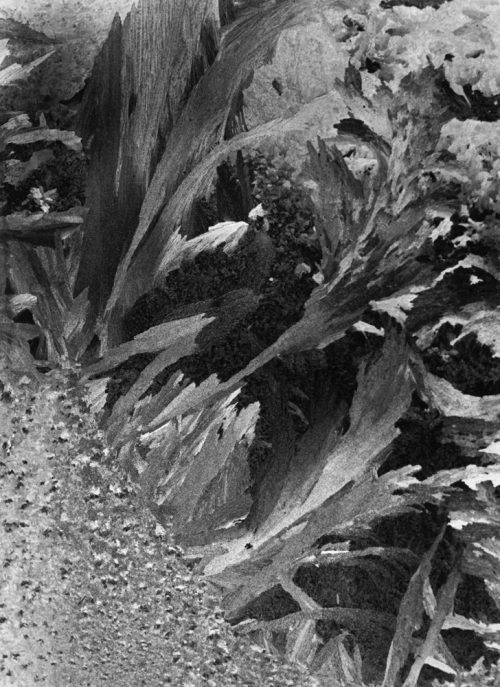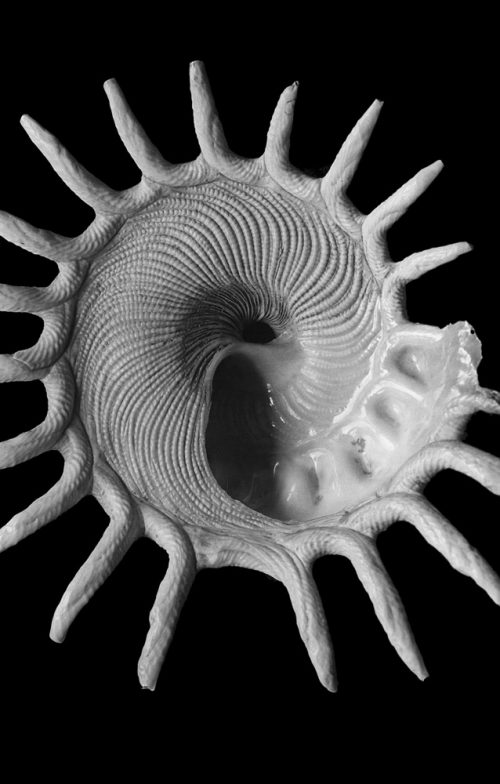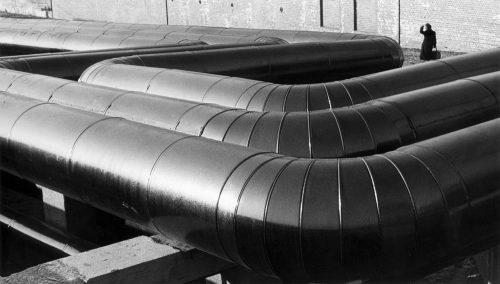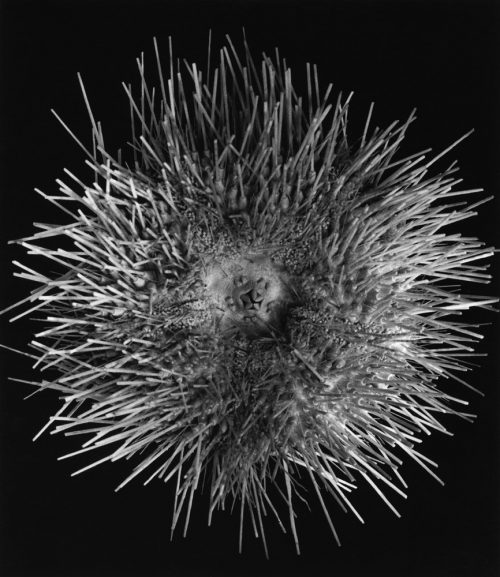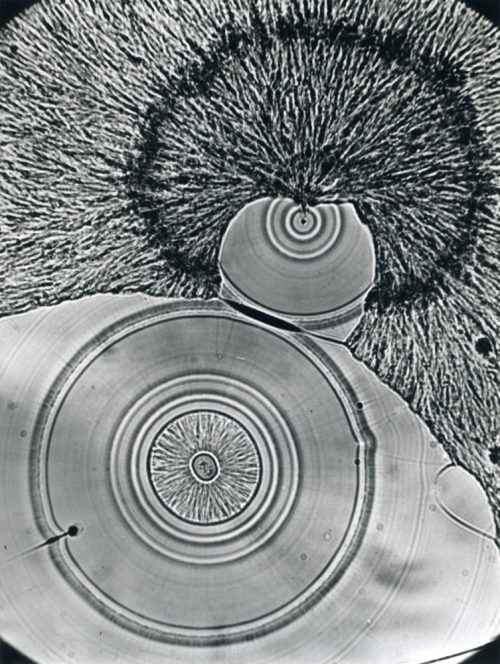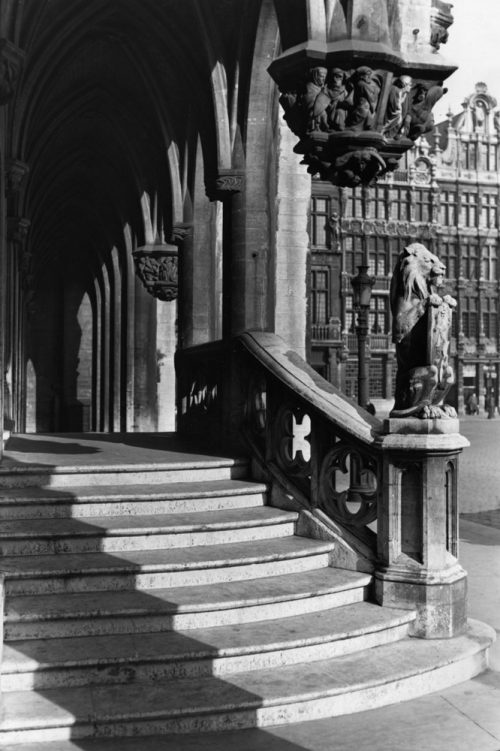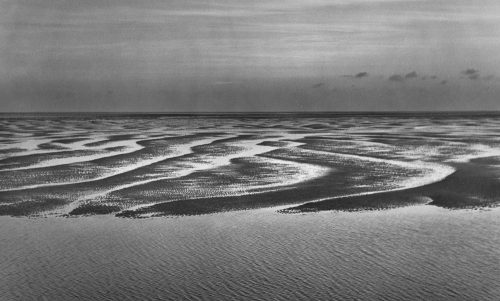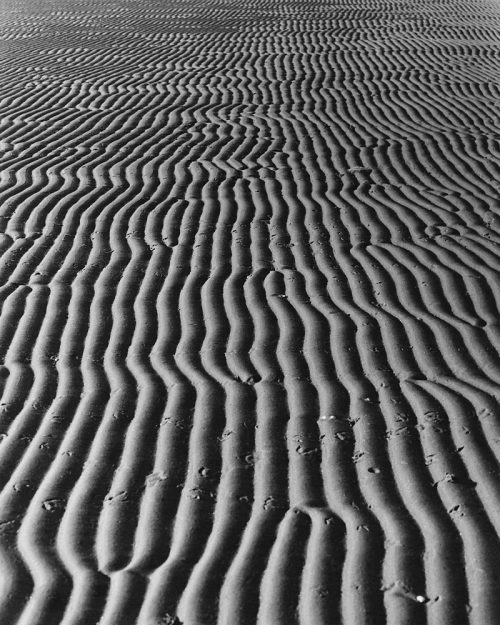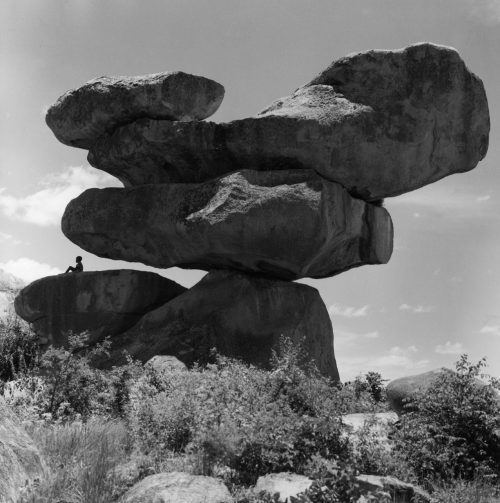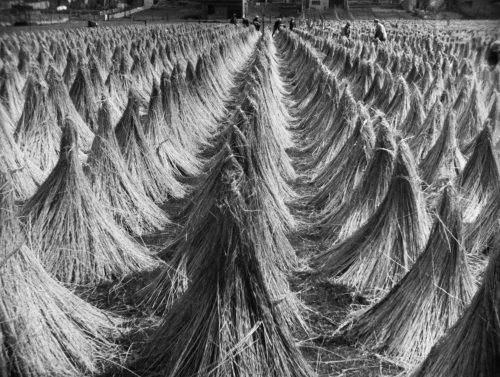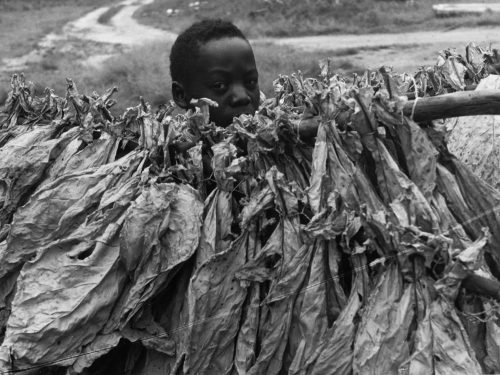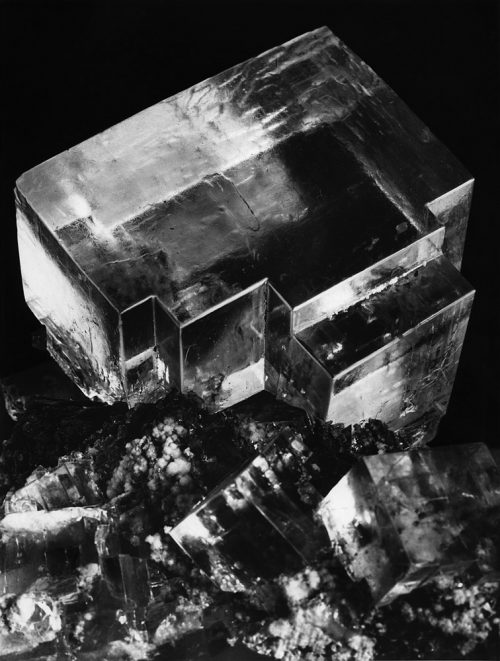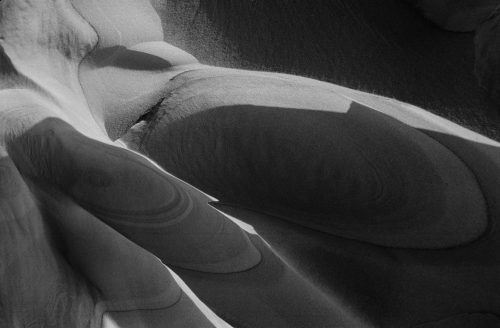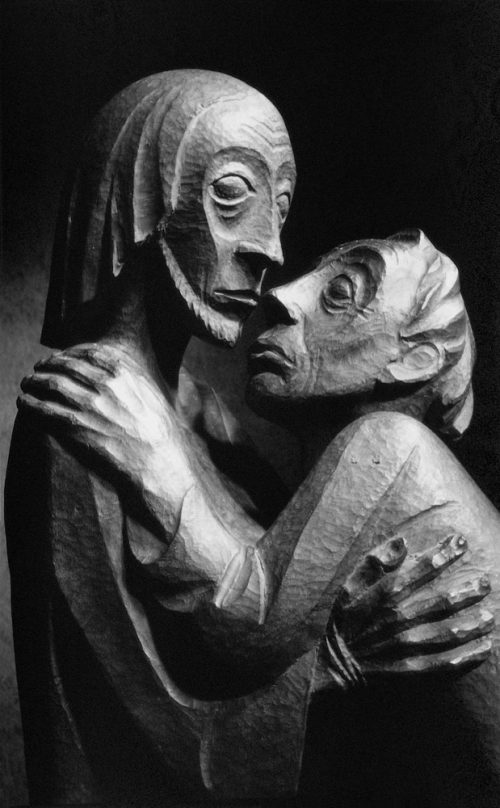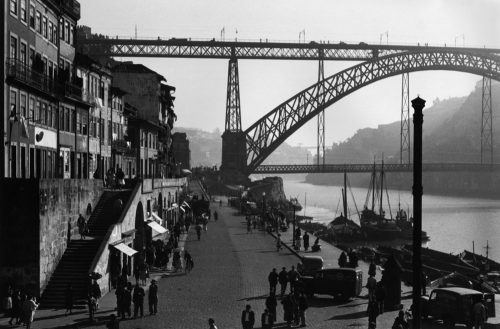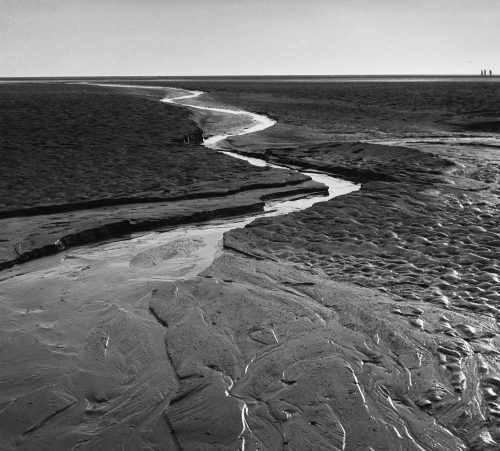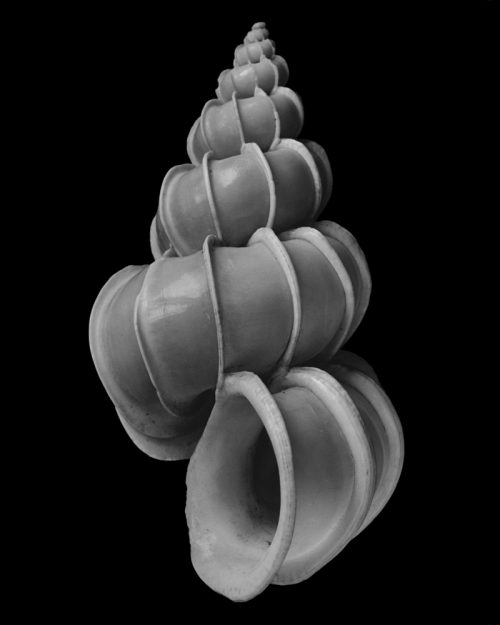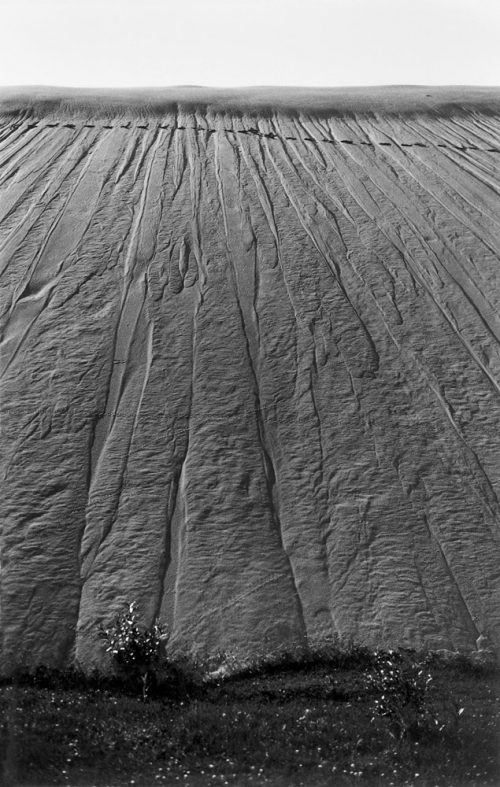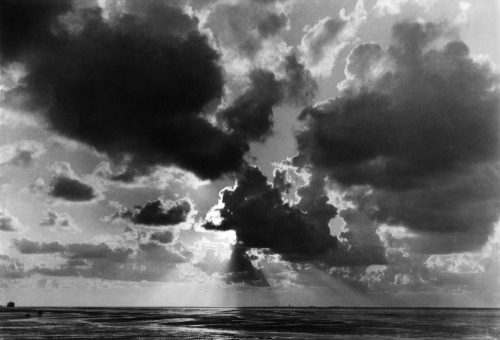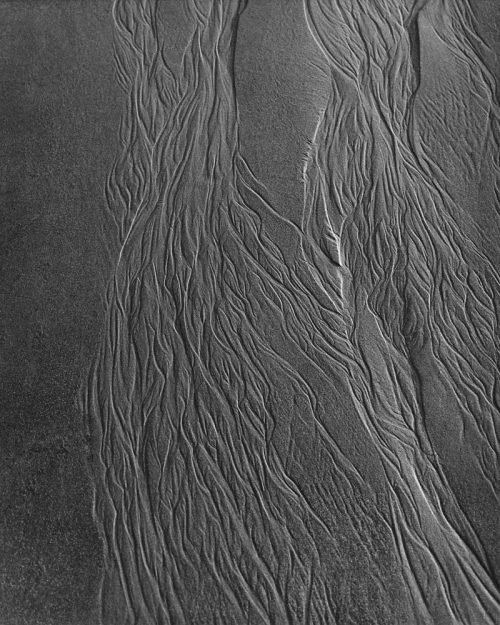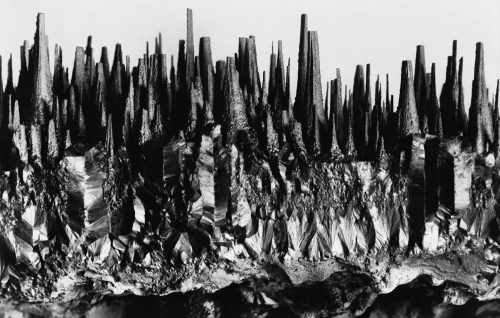Alfred Ehrhardt’s photographs are, in the broadest sense, images of nature. His interests lie in the abstract sand structures in the tidelands and dunes of the Curonian Spit, traveling around Iceland, photographing crystals, shells, and corals, and working with micro photography. Other areas of focus include photographing works of sculpture as well as regional themes developed parallel to his work in film.
Alfred Ehrhardt’s first photographic series Das Watt, Die Kurische Nehrung, Kristalle (The tidelands, the Curonian Split, crystals), as well as Muscheln und Schnecken (Mussels and snails), combines the photographic leanings of New Objectivity and New Vision. His extreme cropping isolates details from their actual contexts, thereby dissolving the structure of the image into abstraction. Ehrhardt’s deliberate use of intense lighting achieves powerful light-dark contrasts and thus clear compositional lines.
The exacting compositions of his photographs reveal Ehrhardt’s artistic training. His preliminary-course studies at the Bauhaus in Dessau under Josef Albers are manifested in both his painting and photography in his preoccupation with material characteristics and surface structure. As a trained musician, his mastery of rhythm, dynamics, and counterpoint in the structure of the image rivals that of Paul Klee or Wassily Kandinsky. Following Klee, who defines the study of nature as the starting point of artistic creation, Ehrhardt’s photographs of landscapes and natural phenomena seek to depict nature’s »elemental primal forces« and the »absolute laws of all phenomena.« His intent is to convey that man is only part of an »overwhelming, timeless« nature. It is not without reason that Alfred Ehrhardt was referred to in his day as a »natural philosopher with the camera.«
